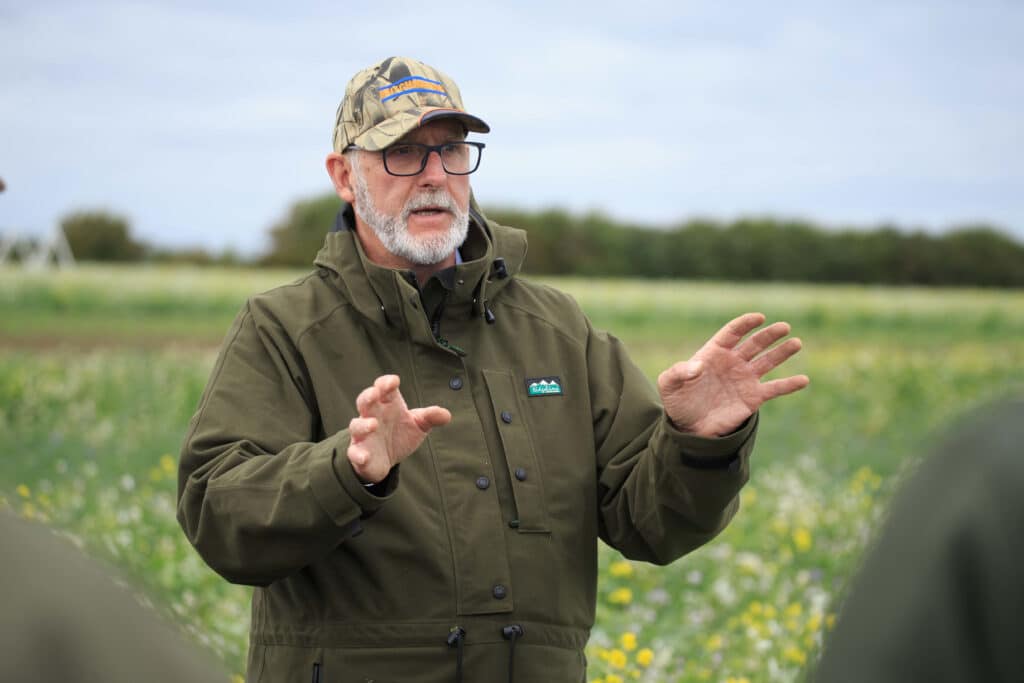How cultivation can control resistant Italian ryegrass – Farmers Weekly
After Italian ryegrass with resistance to high rates of glyphosate was discovered on a Kent farm earlier this year, it was zero-till systems researchers pinpointed as particularly at risk ...
After Italian ryegrass with resistance to high rates of glyphosate was discovered on a Kent farm earlier this year, it was zero-till systems researchers pinpointed as particularly at risk.
They found a strong link between farms adopting reduced levels of cultivations and more spring cropping, and an increased risk of glyphosate resistance developing.
While spring cropping is typically deemed good practice for weed management, ryegrass can germinate 365 days of the year, making it much more persistent than weeds such as blackgrass.
Flex-till farming
By springtime, especially in the absence of cultivation, any Italian ryegrass weeds that emerged over the winter are usually well established when cover crops or stubbles are given a dose of glyphosate.
This, combined with the grassweed’s genetic propensity to develop resistance to herbicides, has created the perfect storm for the herbicide’s downfall, meaning no-tillers may need to resort to light cultivations.
Hutchinsons technical manager and cultivations expert Dick Neale is increasingly promoting the idea of “flex-till” farming because he believes it is very difficult to get consistently strong control of Italian ryegrass just by using a chemical approach.
“I’m not saying you have to use aggressive cultivations, but whipping across the top with something slightly more than a rake to pull out established grassweeds and leaving them on top to desiccate will help stop weeds getting out of hand over winter,” he says.
However, he acknowledges it does make it difficult to put a cover crop in, but if farmers put themselves in a position where they are totally reliant on glyphosate, they won’t be able to grow a crop as it will be overridden with weeds.
“If you’re sowing a winter cover crop, to get the best establishment you tend to drill it in August.
“If you then have August-germinating ryegrass coming up in that cover crop, by the time you get to mid-January or February, those ryegrass plants are monstrous, multi-tillered plants.
“The only thing you are then using to control those plants is glyphosate, and that’s the problem,” says Dick.
Italian ryegrass does not respond to cultural controls like blackgrass does, so stale seed-beds, delayed drilling and use of spring barley are simply not as effective.
Its growth habits make it very difficult to pinpoint when to apply both contact and residual herbicides.
“If the weed isn’t all there on the day you spray, or you can’t thoroughly hit it, control will be poor.
“This selects for resistance because you’re not always hitting the emerging population with a sufficient dose of herbicide,” explains Dick.
“The weed then metabolises the herbicide because it’s not at a full effective dose, so that plant becomes resistant over time.
“The rate at which Italian ryegrass develops resistance is off-the-scale fast compared to blackgrass or wild oats.”
High weed burden
Where weed burden is high, or glyphosate-resistant Italian ryegrass has been found, more drastic measures may be needed.
“The only crop with any real cultural value is a three-year, herbal-rich ley that can be grazed or cut to prevent headings of ryegrass,” explains Hutchinsons’ Dick Neale.
“This could be whole-cropped for anaerobic digestion, baled for haylage or grazed by a neighbouring farmer.
“Don’t keep trying a new herbicide to get on top of it, because you will end up chasing your tail.”
